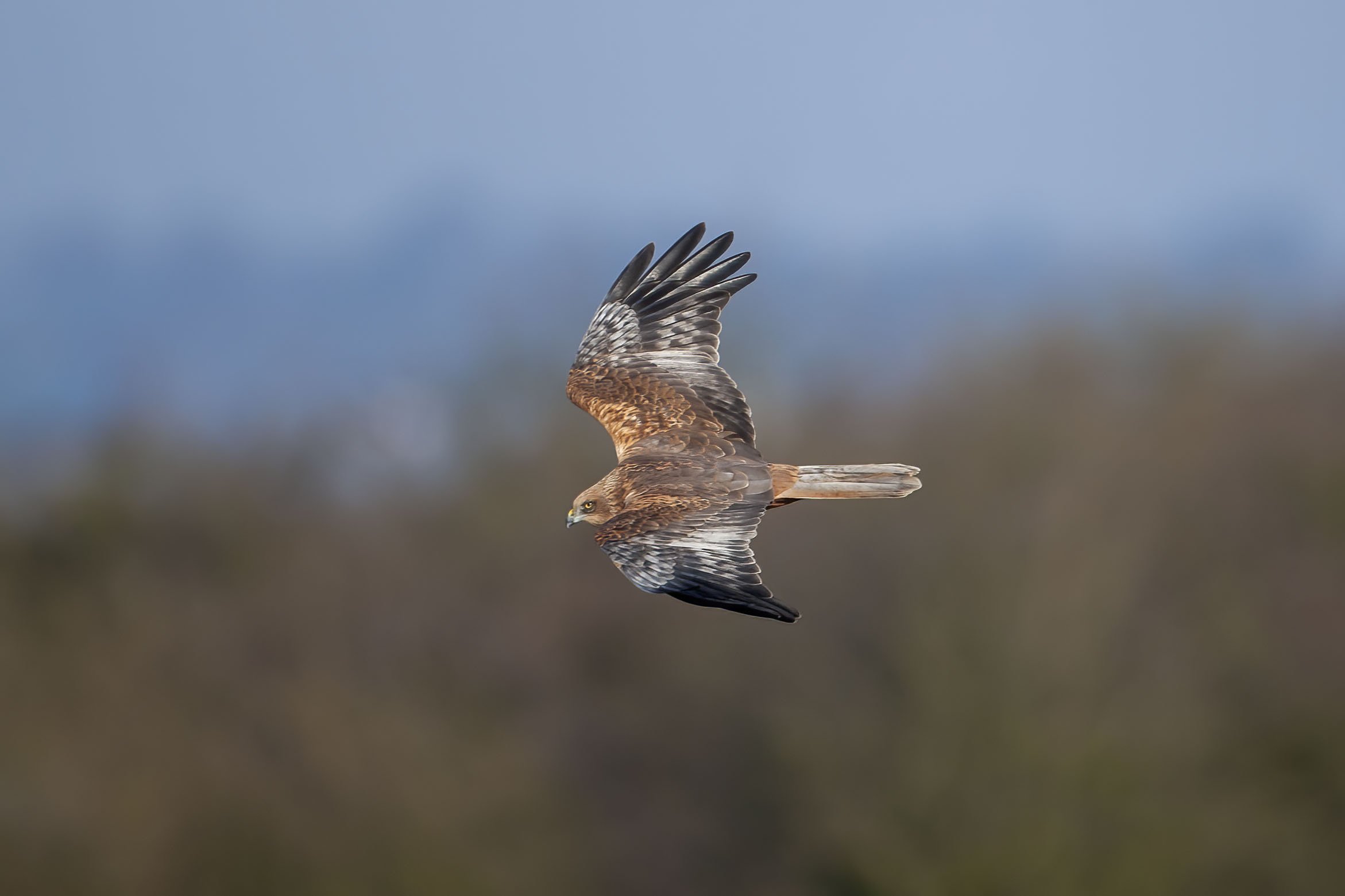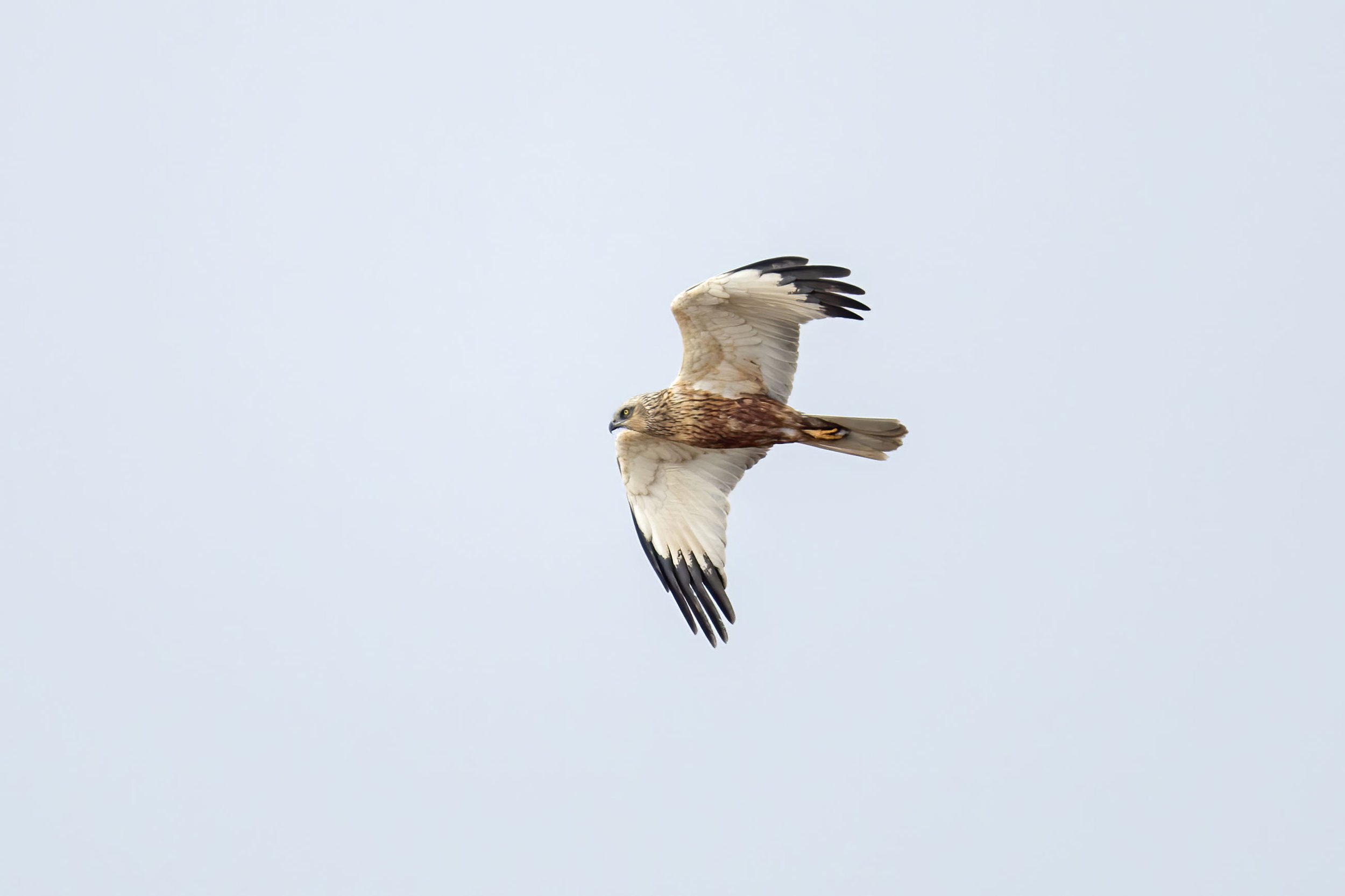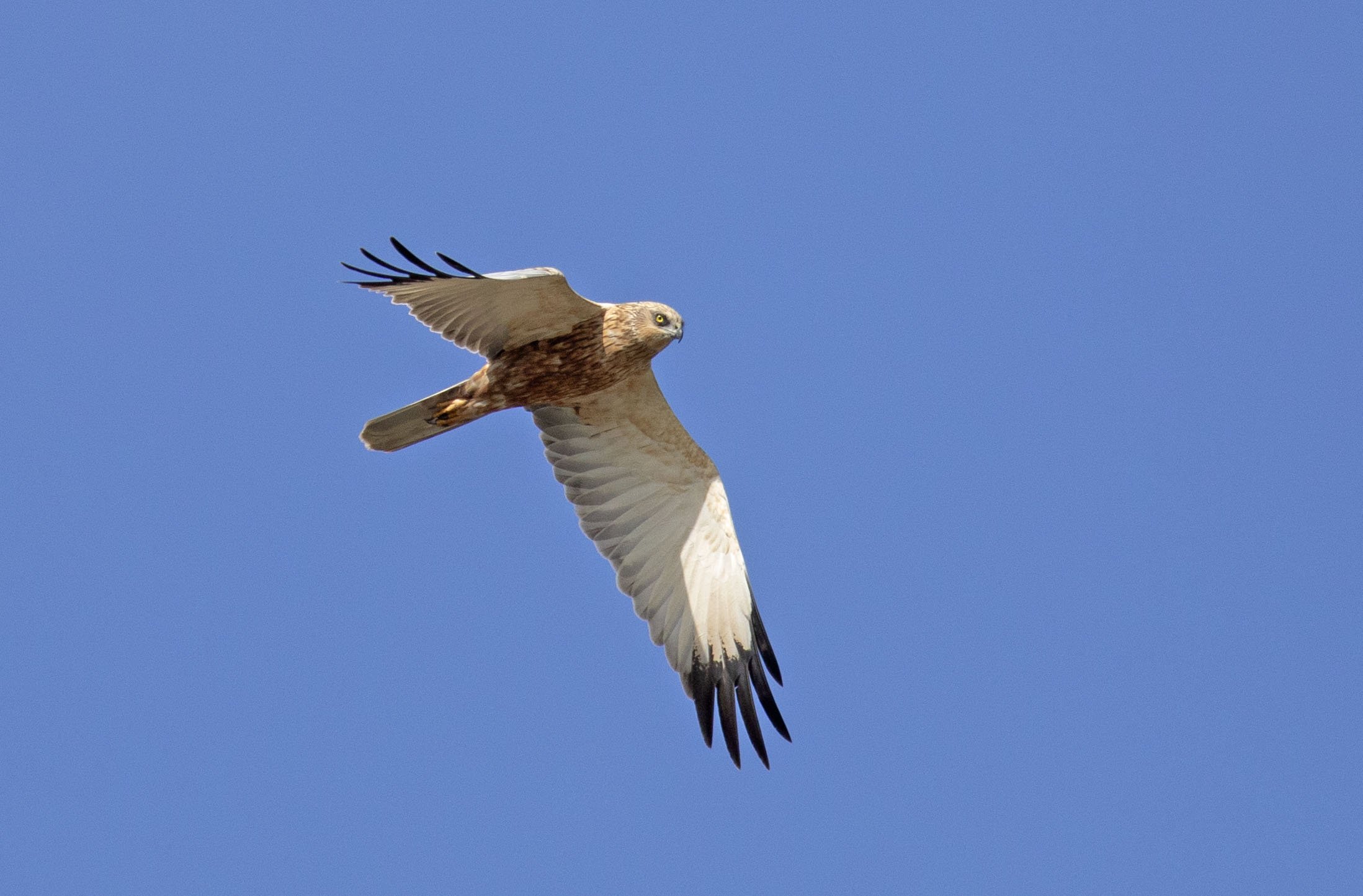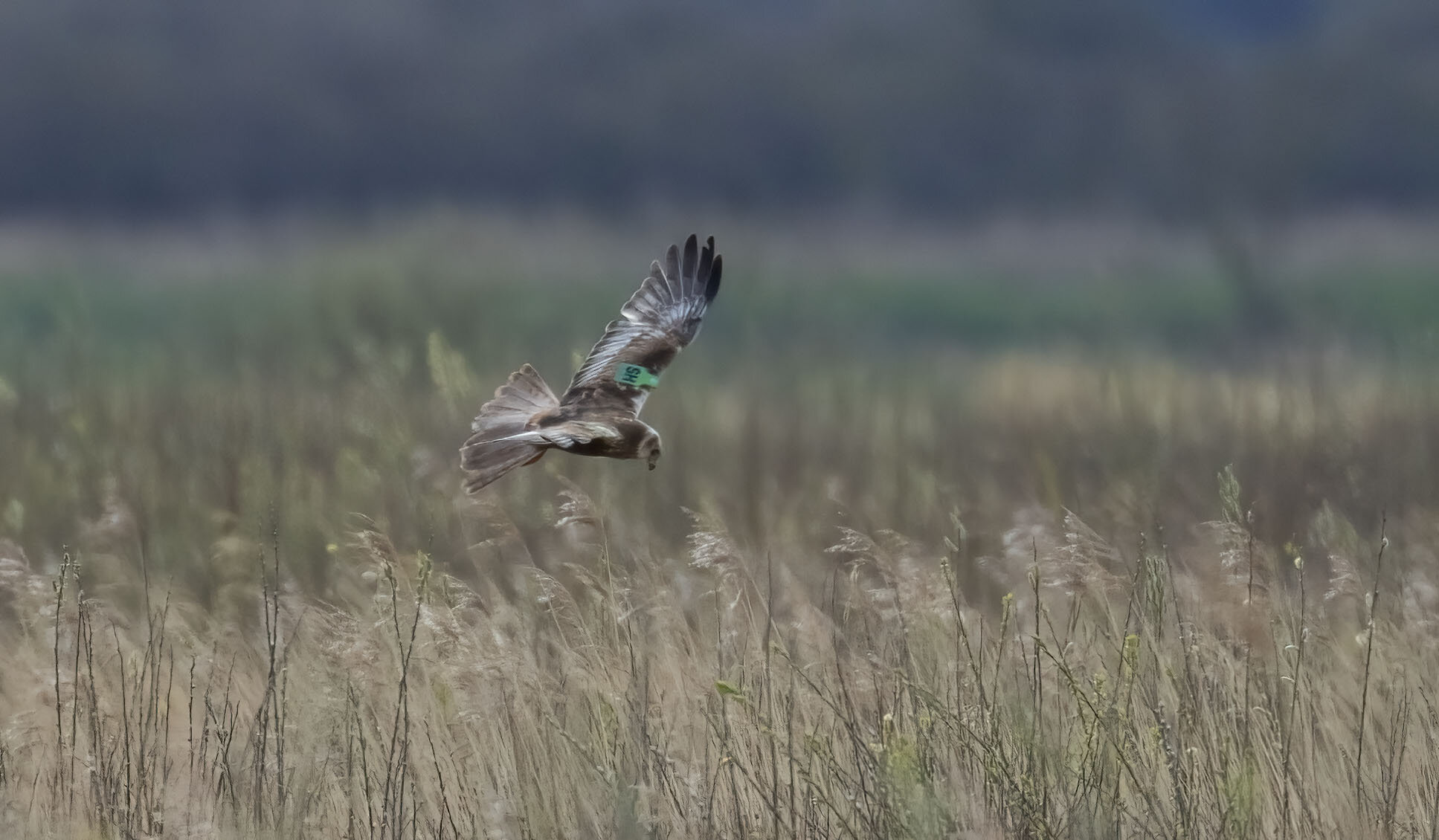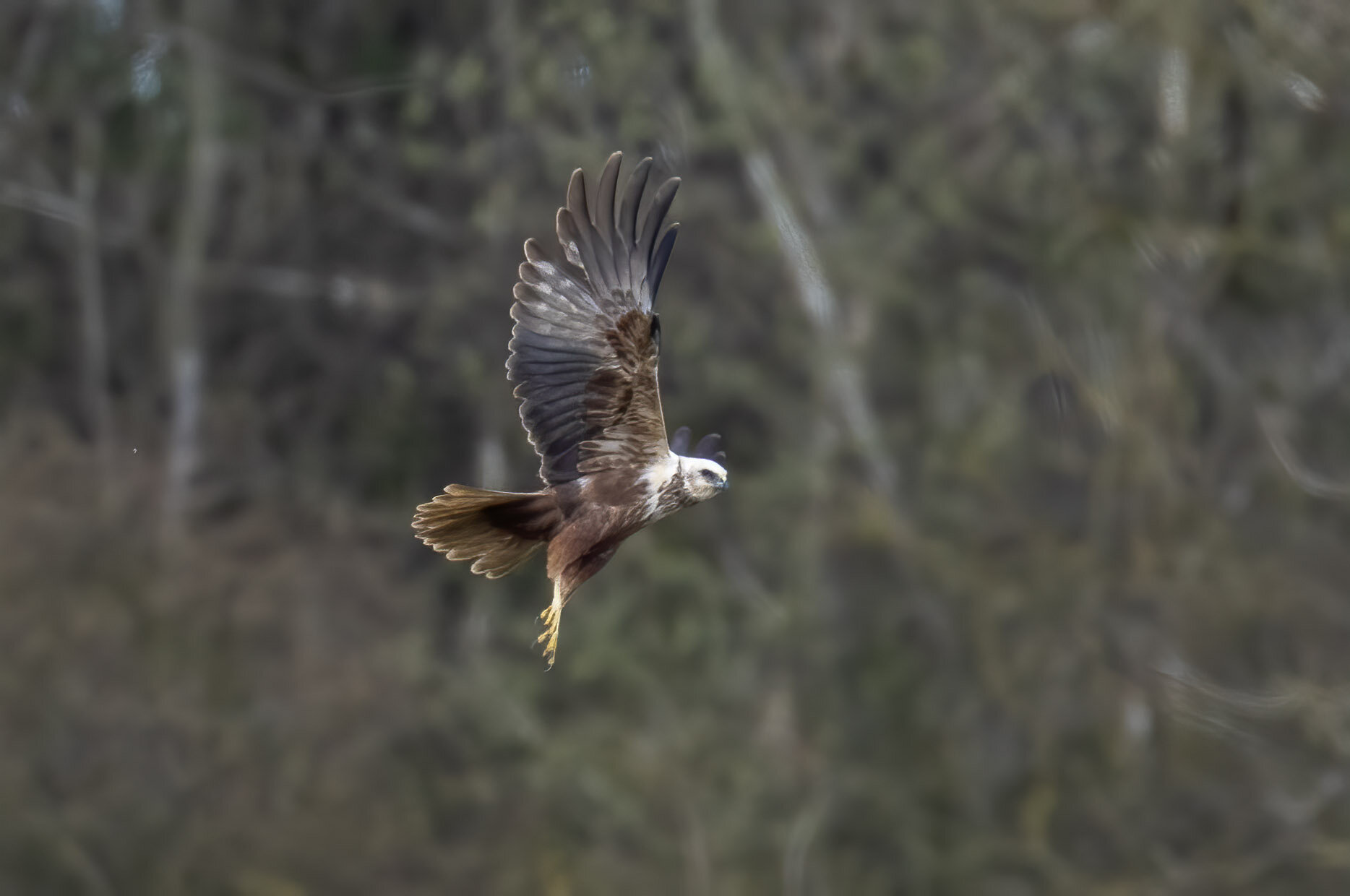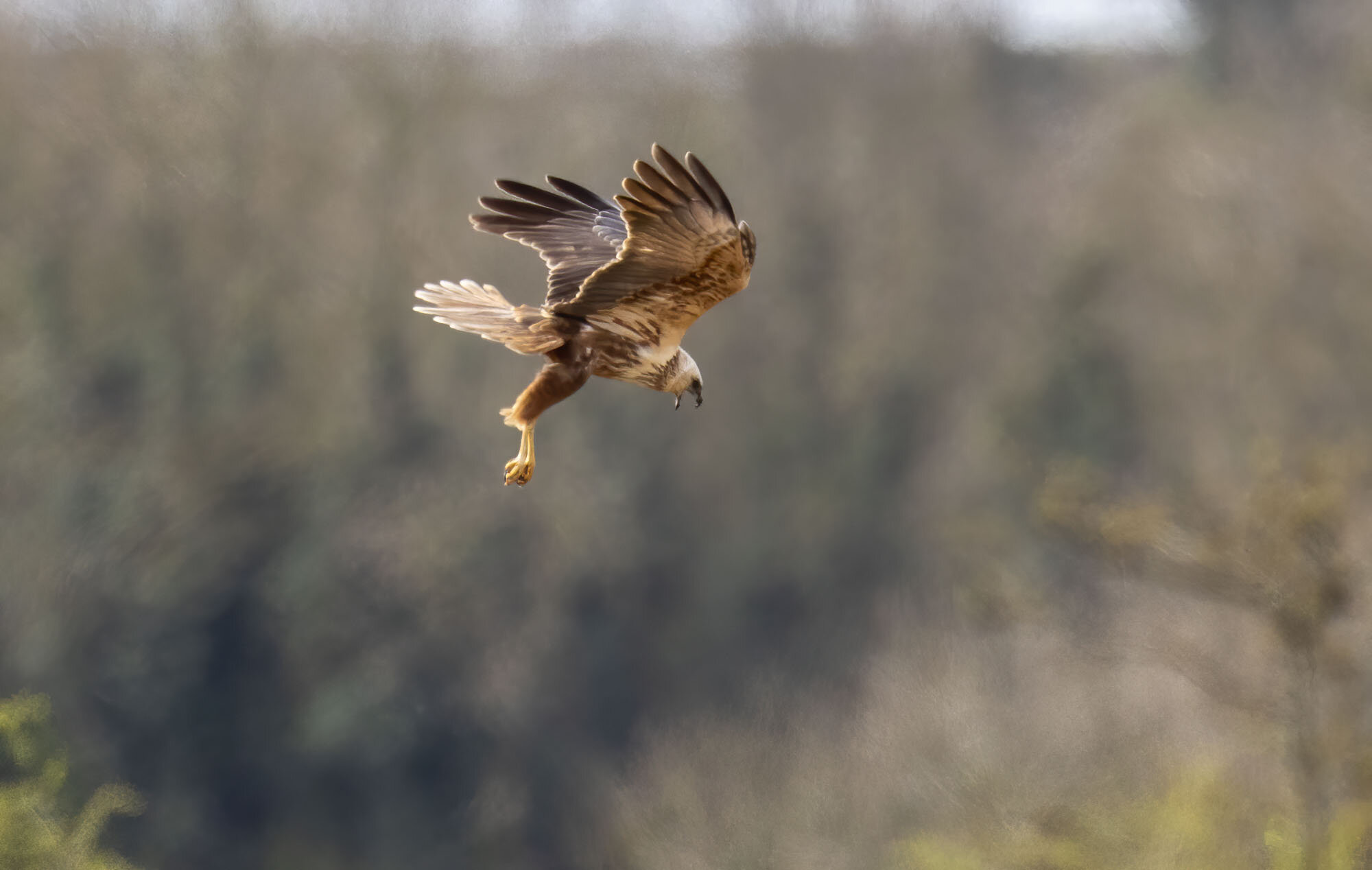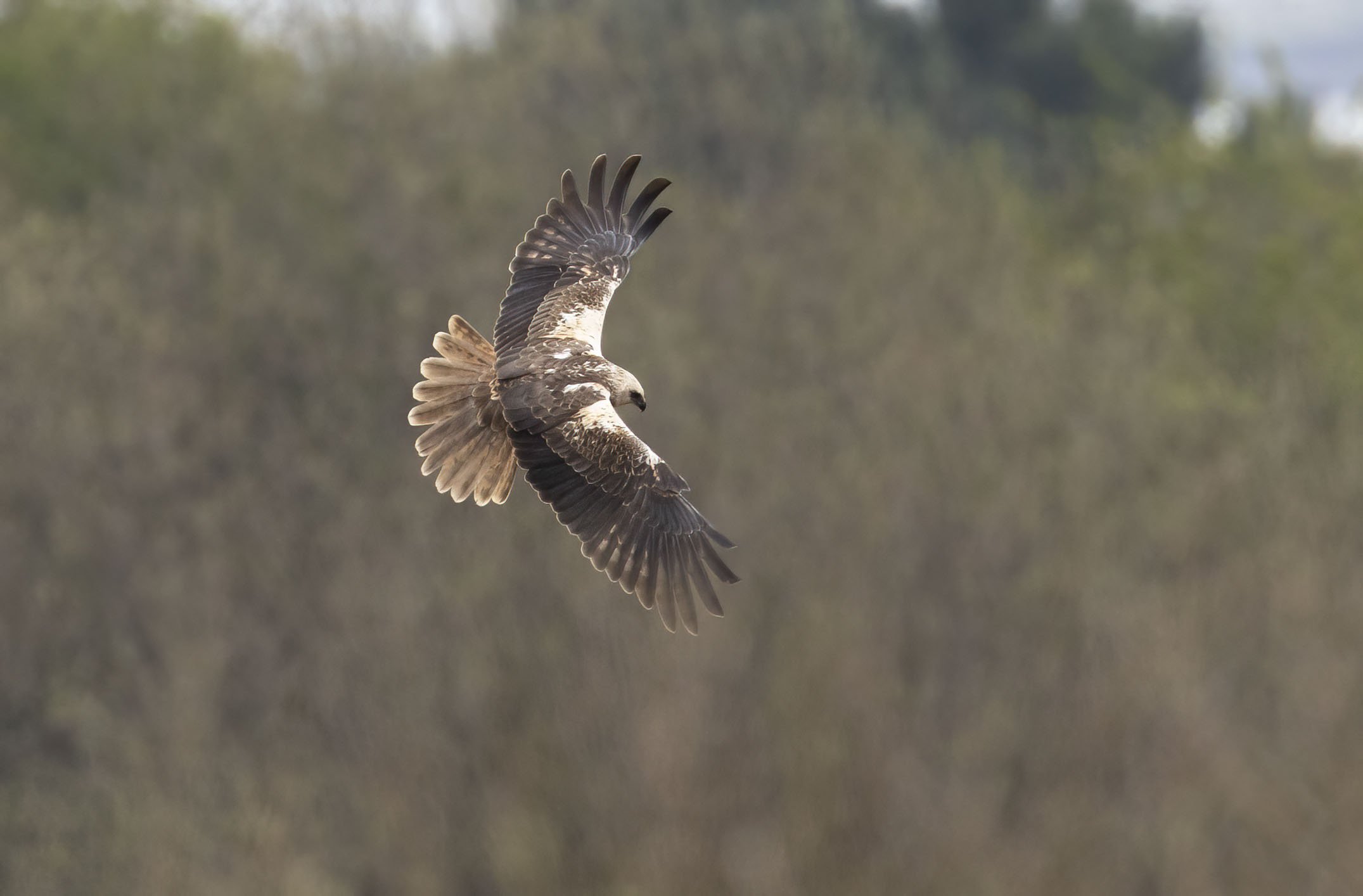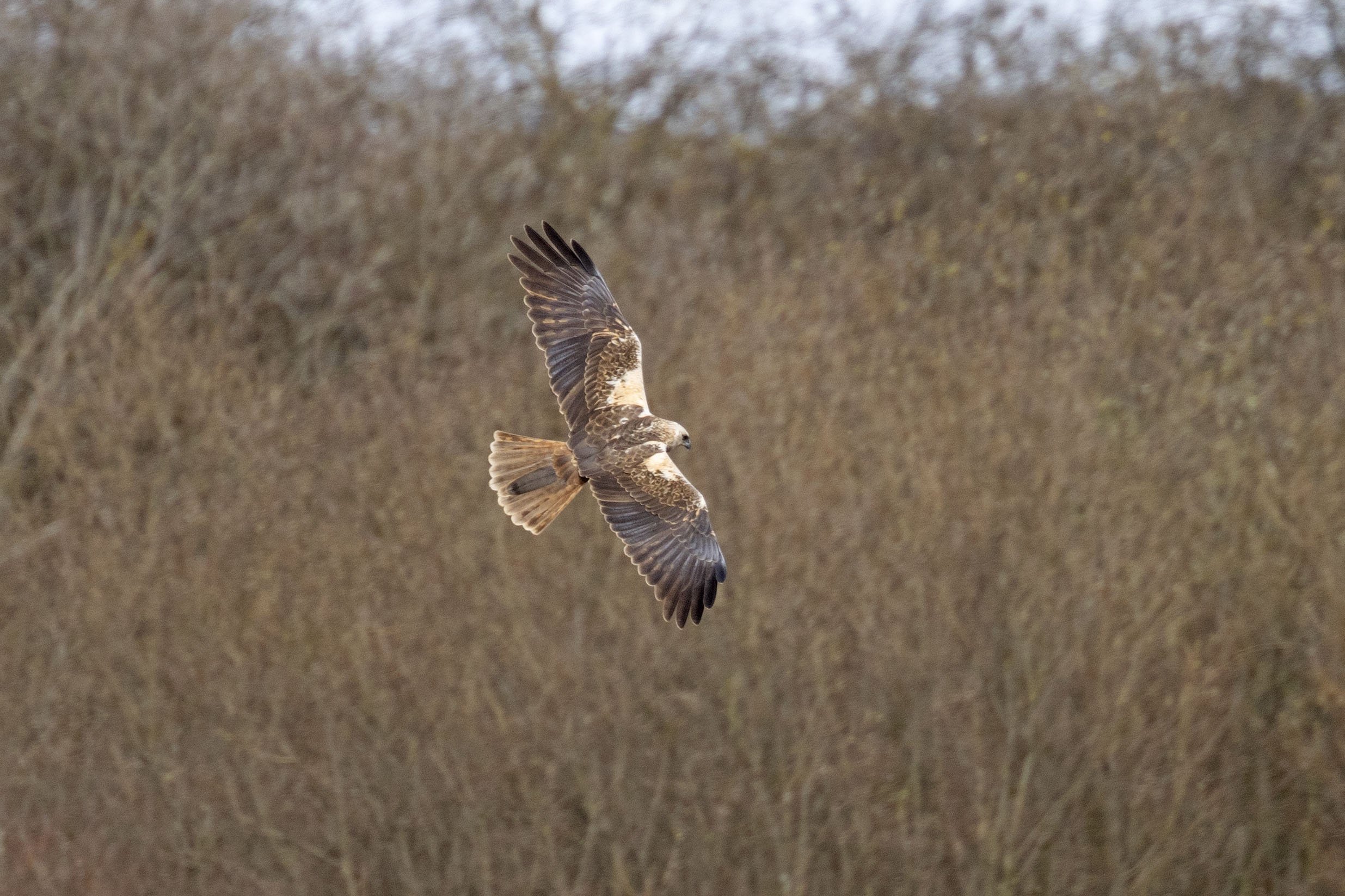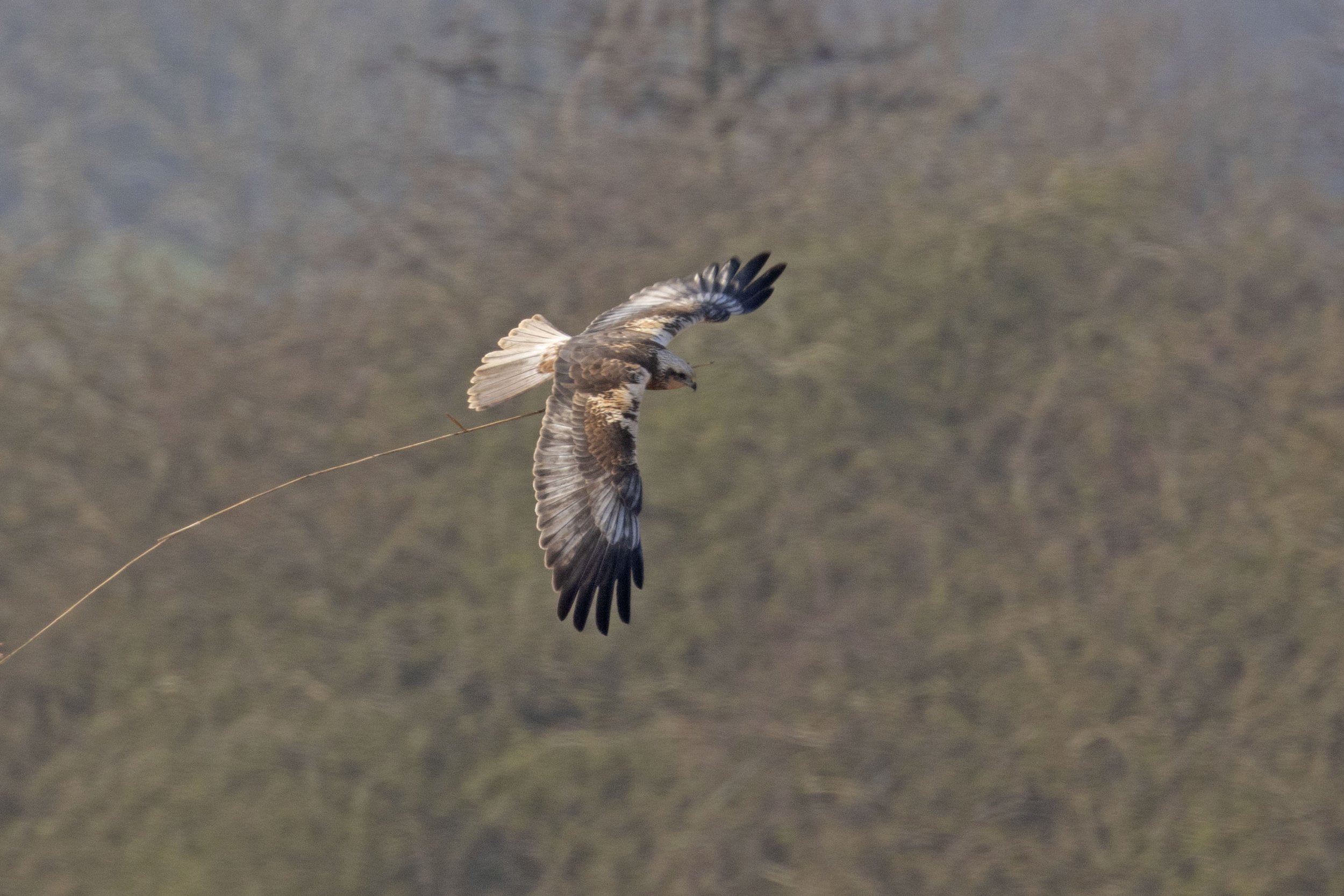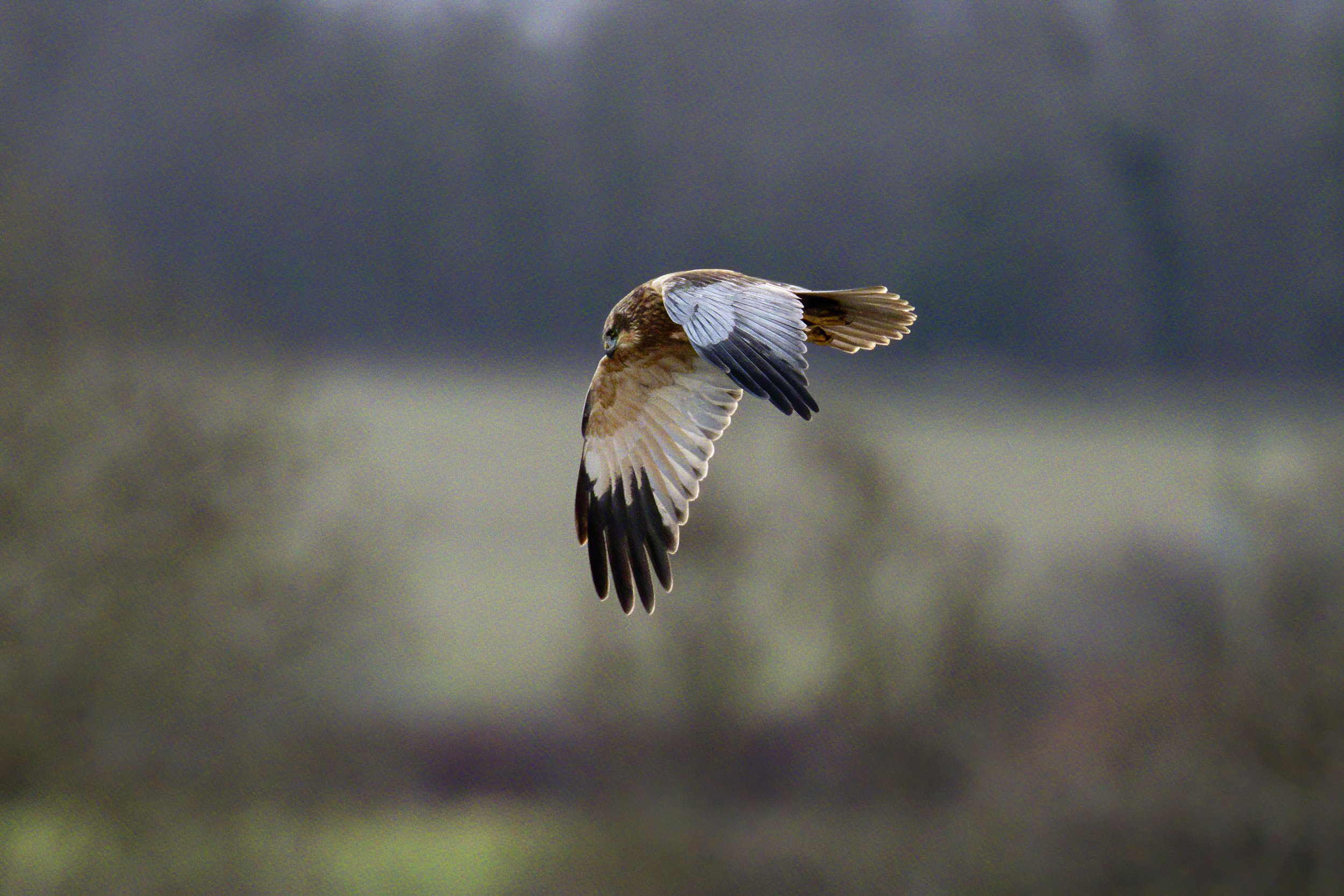With the aid of digital photography I have attempted to follow individual breeding Marsh Harriers over the last 15 years trying to obtain comparable images of what I take to be the same returning birds in successive years showing the changes in plumage from year to year. This gallery attempts to show the plumage development of a few individuals all photographed at nest sites in the breeding season.
Below is a sequence of a breeding male that first adopted a local territory in 2009 and has bred in the same area annually ever since. In the first five years of breeding this male was monogamous and of five nesting attempts three failed with seven young reared in the other two years. From his 8th calendar year this male has been bigamous in five of the last seven years and of 12 nesting attempts only one has failed and he has reared 29 young in seven years making a total of 36 young fledged in his life time.
April 2009 3cy
May 2009 3cy
February 2010 4cy
February 2010 4cy
April 2010 4cy
April 2011 5cy
April 2011 5cy
April 2011 5cy
April 2011 5cy
March 2012 6cy
February 2012 6cy
April 2013 7cy
April 2013 7cy
April 2013 7cy
April 2014 8cy
April 2016 10cy
March 2017 11cy
April 2018 12cy
April 2018 12cy
April 2019 13cy
April 2019 13cy
April 2020 now c14 cy
April 2020 14cy
April 2023 17cy
Bird number two is of known age due to being wing-tagged at ringing.
Lime tags SH was ringed as a nestling in North-west Norfolk, from a nest in an oilseed rape field on June 27th 2014 by the North West Norfolk Ringing group to whom I am grateful for the following information and permission to use their photos of SH in the nest with its siblings Green SI and SJ.
The group have a long-running study of colour ringed and wing-tagged Marsh Harriers from East Anglian nests that has produced some amazing results that can be found on their web site by clicking the link below
The wing tagging project began in 2011 and by the end of 2023 a total of 904 nestling Marsh Harriers had been ringed and wing tagged. This has resulted in a recovery/sighting rate of 37.94% a result that could not have been anticipated.
After ringing SH was not seen again until May 12th 2015 when he was at Blacktoft Sands on the upper Humber. The following year in April 2016 I found SH in the lower Ancholme Valley first images. The following year on June 4th I again saw SH and managed a poor record shot of his plumage on June 4th. In 2019 SH took over an established breeding territory in a riverine reedbed and fledged at least one young. SH bred again in 2020 in the same area but in a different small reedbed. Note that some time between 2017 and 2019 SH lost one of his wing tags.
It is interesting that a Norfolk bred bird has moved to North Lincolnshire to breed in an area that already held breeding birds but also that a bird fledged in a crop nest went on to nest in a reedbed site. Between 1993 and 2022 in my study area in North Lincolnshire I have located 415 nests of which only three have been crop nests so the species is clearly highly tied to reedbed sites in this area.
SH, SI and SJ in the nest in oilseed rape field June 2014
male Lime, SH in black at ringing June 27th 2014
SH in the lower Ancholme Carrs, North Lincolnshire April 2016 now 3cy
SH in the lower Ancholme Carrs, North Lincolnshire April 2016 now 3cy
SH in the lower Ancholme Carrs, North Lincolnshire April 2016 now 3cy
SH in the lower Ancholme Carrs, North Lincolnshire June 2017 now 4cy
SH in the lower Ancholme Carrs, North Lincolnshire June 2017 now 4cy
SH in the lower Ancholme Carrs, North Lincolnshire July 2017 now 4cy
SH in the lower Ancholme Carrs, North Lincolnshire June 2017 now 4cy
SH in the lower Ancholme Carrs, North Lincolnshire July 2019 now 6cy
SH in the lower Ancholme Carrs, North Lincolnshire May 2020 now 7cy
SH in the lower Ancholme Carrs, North Lincolnshire May 2020 now 7cy
Ageing females is much harder than males and there tends to be a greater change-over of females at some nest sites than males so getting shots over a long period of successive years is challenging.
This is a female, certainly the same bird in the latter years, 2016 - 2020, but the shots in 2013 - 2015 also appear to be the same bird based on specific underwing pattern but the difference in plumage tones is notable though perhaps enhanced by light conditions. All images were taken at the same location.
April 2013 3cy+
April 2014 4cy+
April 2015 5cy+
April 2016 6cy+
April 2017 7cy+
April 2018 8cy+
March 2019 9cy+
July 2020 10cy+
April 2021 11cy+
April 2021 at least 11 years old now
April 2022 now 12+ years old
April 2022 now 12+ years old
April 2022 now 12+ years old
March 2023 13cy
March 2023 now 13+ years old
March 2023 at least 13cy
March 2023 13cy+
Another male that appeared at Barton in 2021 as a 3cy and now seems to be resident staying on territory all winter
April 2021 presumed 3cy
April 2021 presumed 3cy
March 2022 4cy spring
March 2022 4cy spring
March 2022 4cy spring
December 2022 4cy but post full moult
December 2022 4cy but post full moult
December 2022 4cy but post full moult
January 2023 5cy
January 2023 5cy
April 2023 5cy
April 2023 5cy
December 2023 5cy autumn
January 2024 6cy
January 2024 6cy
January 2024 6cy
January 2024 6cy



